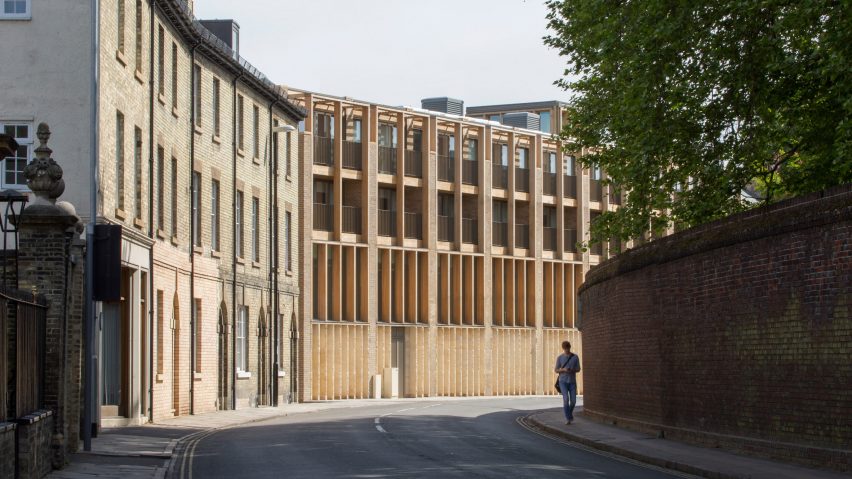
Niall McLaughlin Architects updates Cambridge college using historically appropriate materials
Niall McLaughlin Architects has refurbished a 1970s building at Jesus College, Cambridge, adding a new facade with a vertical composition of stone and timber elements.
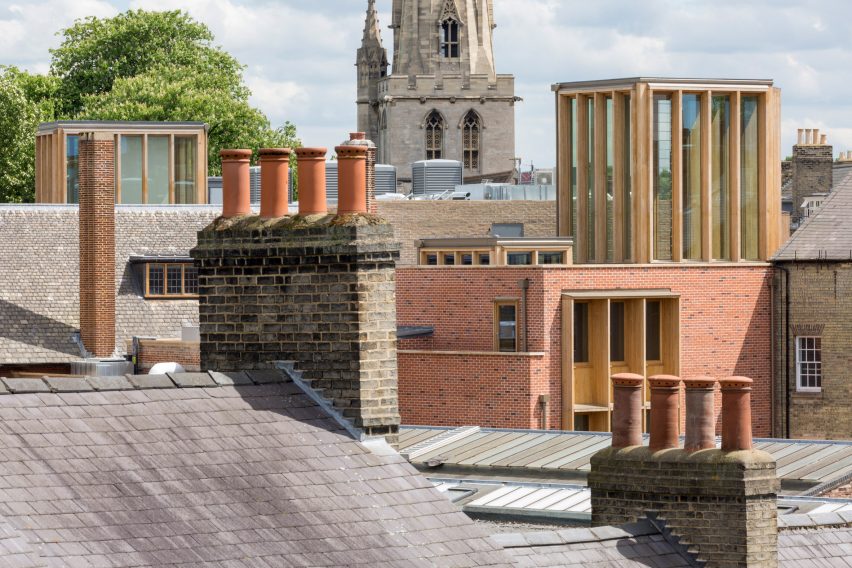
The London-based practice won a competition in 2014 to redevelop parts of the University of Cambridge college and introduce new facilities including an auditorium, archive storage and a sports buildings on the most westerly part of its existing site.
The proposed masterplan features three phases, with the initial phase focusing on the refurbishment and extension of the heritage-listed Webb Building, as well as the redevelopment of a 1970s block facing onto Jesus Lane.
The renovation work carried out on the red-brick Webb Building involved carefully restoring rooms such as the existing library and dining area, as well as introducing a mixture of offices, social spaces, and student accommodation.
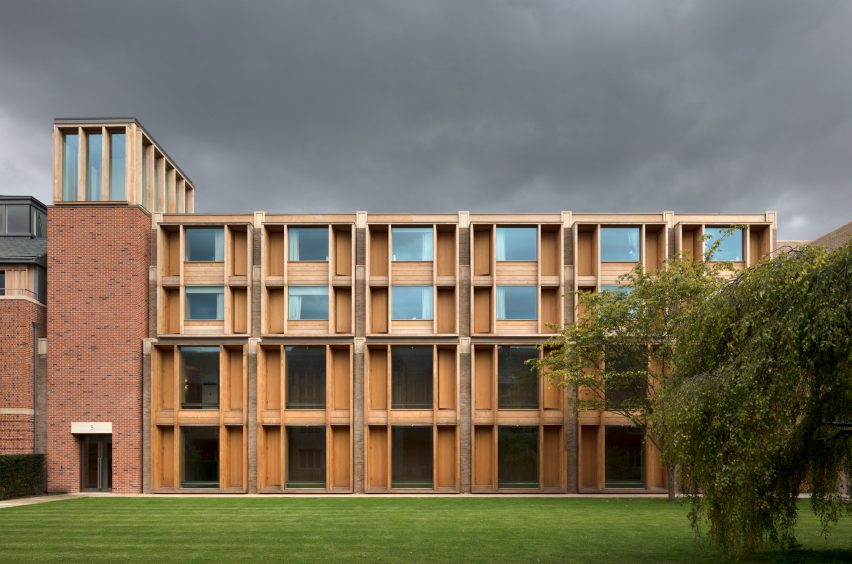
The building was extended to create a cafe and bar for use by students, as well as people attending conferences and functions. A new cafe pavilion rises above a sunken terrace and provides views of the adjacent hockey pitch through full height glazed walls.
The college also wanted to convert the 1970s Rank Building to provide hotel accommodation to support the new conferencing facilities and to generate revenue for the college.
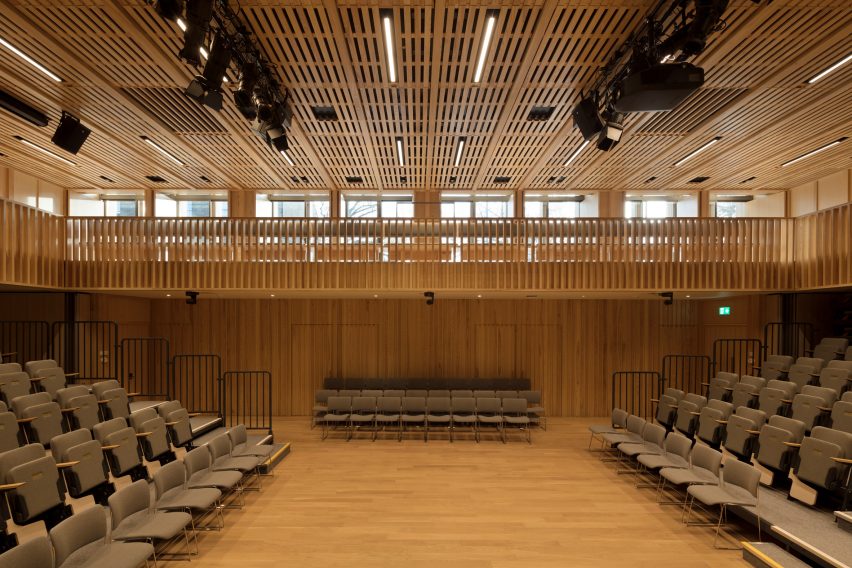
The building's reconfigured ground floor and first floor now accommodate a new lecture hall, administrative spaces, conferencing facilities and teaching rooms.
It was also extended westwards to create a prominent entrance building facing onto Jesus Lane, which is an important thoroughfare in the city centre.
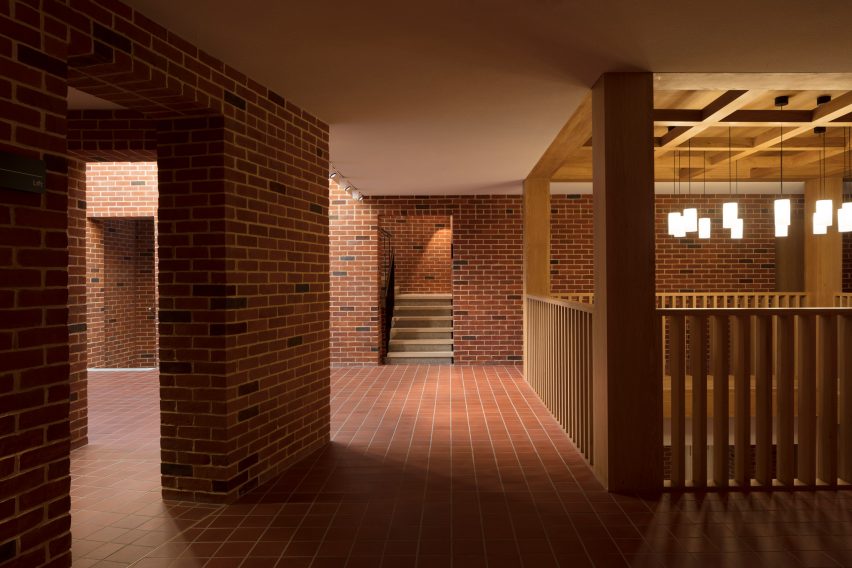
"A lot of this work was done with a view to improving connections to the existing site, to the public realm on Jesus Lane, but also to give it a prominent frontage and provide routes through to the auditorium that will be built as part of the second phase," architect Tom McGlynn told Dezeen.
The Rank Building was stripped back to the bare bones of its structure, and even this was significantly altered with new light wells and openings cut in, along with the addition of new staircases and lifts.
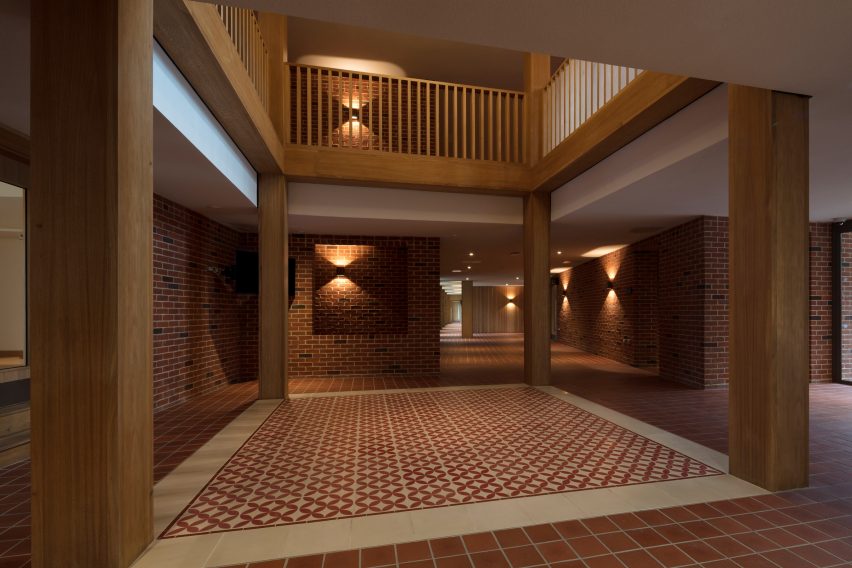
Remnants of the existing structure include the brick piers on the front and rear of the building, which were extended upwards. The 1970s aesthetic of horizontal openings jarred with the surrounding Victorian and Georgian terraces, so the studio sought to introduce a more vertical facade composition.
"The main move was to establish a vertical rhythm to that facade that wold tie into its context better," added McGlynn. "That involved working within the existing piers on the street facade to create a vertical order that diminishes in density as you go up through the building."
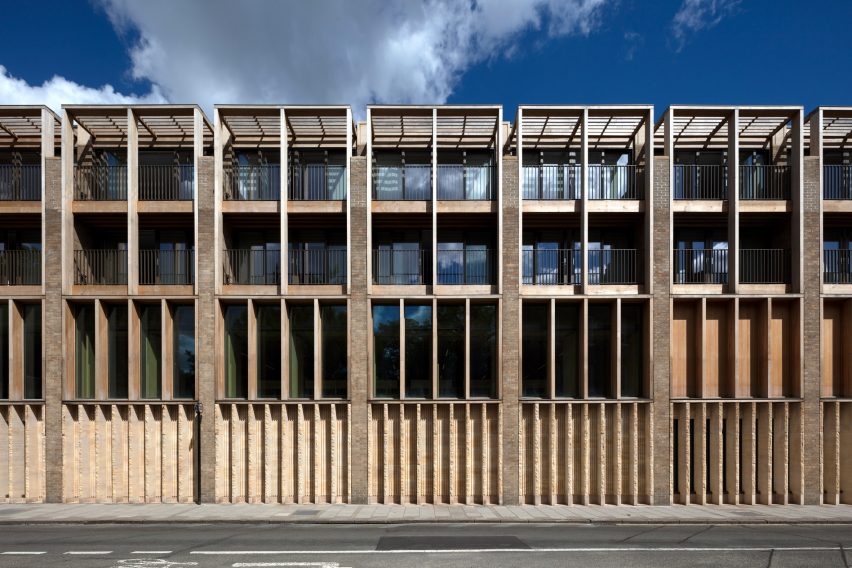
Rough-hewn stone pillars create a robust and private feel that protects the ash-lined ground-floor lecture theatre and teaching spaces from the street. The facade gradually opens up to create balconies for the hotel rooms on the upper floors.
The treatment of the north facade looking onto the courtyard is very different and reflects its more quiet and private character. The upper floors have window desks built into the facade, with operable shutters providing natural ventilation.
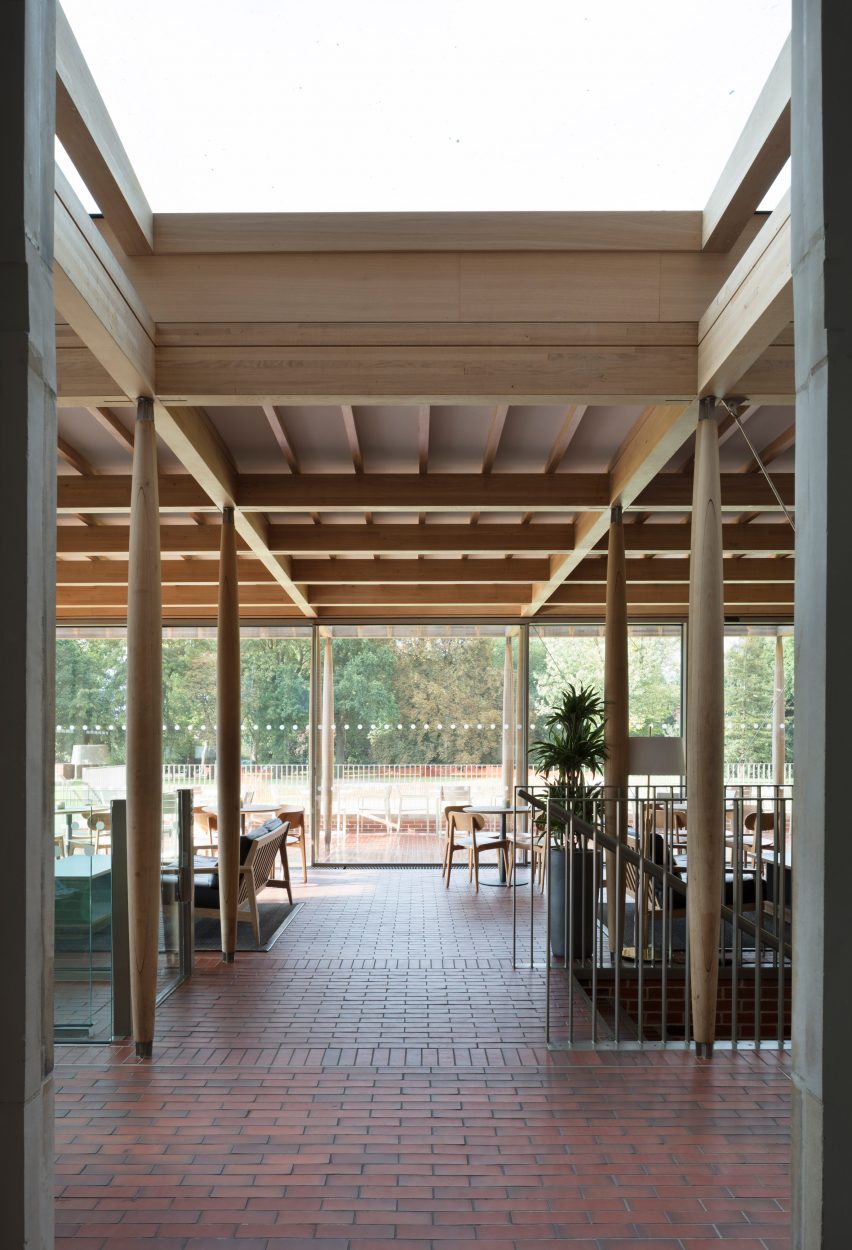
Glazed lanterns top a pair of red-brick towers that reference the materiality of the existing buildings around the courtyard. One of the towers accommodates a new entrance and another provides a stair core at the east end of the Rank Building.
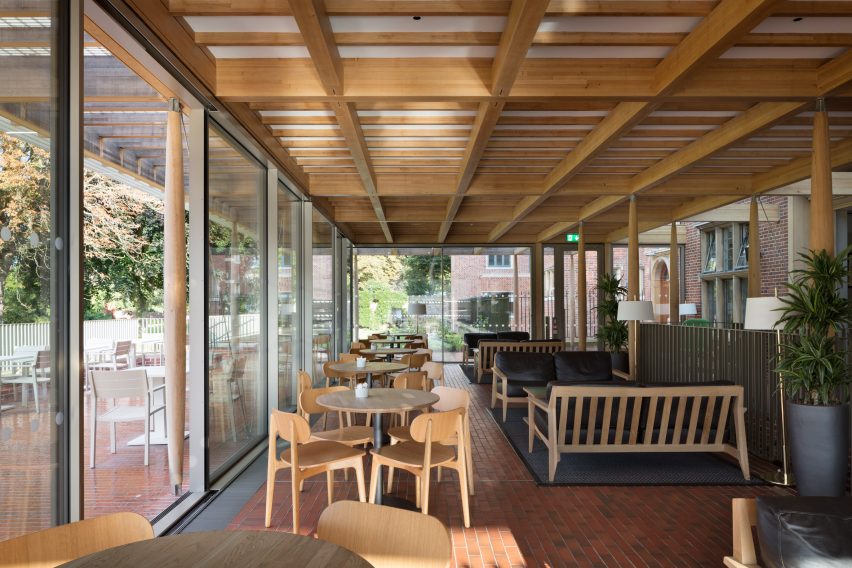
The lantern located above the new entrance functions as a beacon that also allows natural light to flood into a triple-height circulation space.
The new entrance building contains a reception for the hotel, along with breakout spaces, offices and a conference room.
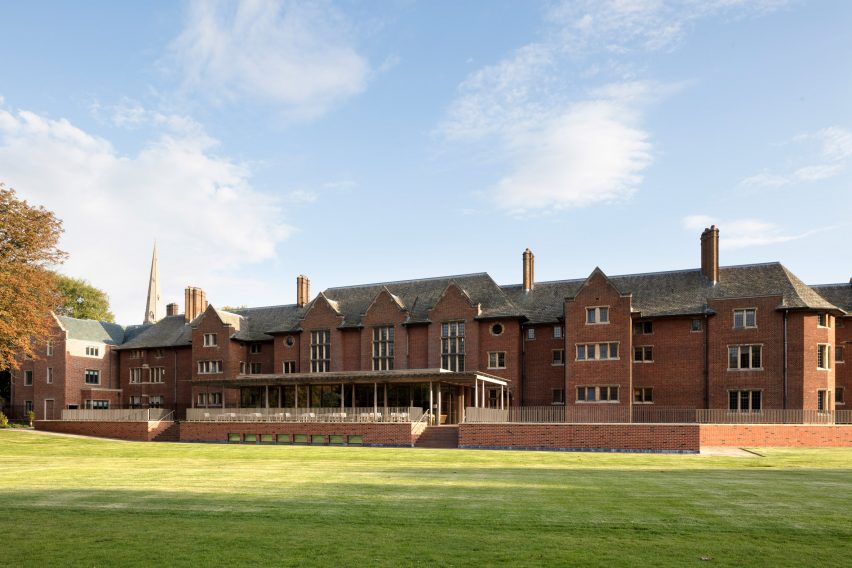
The entrance lobby and surrounding corridors are lined with red brick to create a more direct connection with the Webb Building. Patterned square quarry tiles were chosen to match existing tiles used in the old building's circulation spaces.
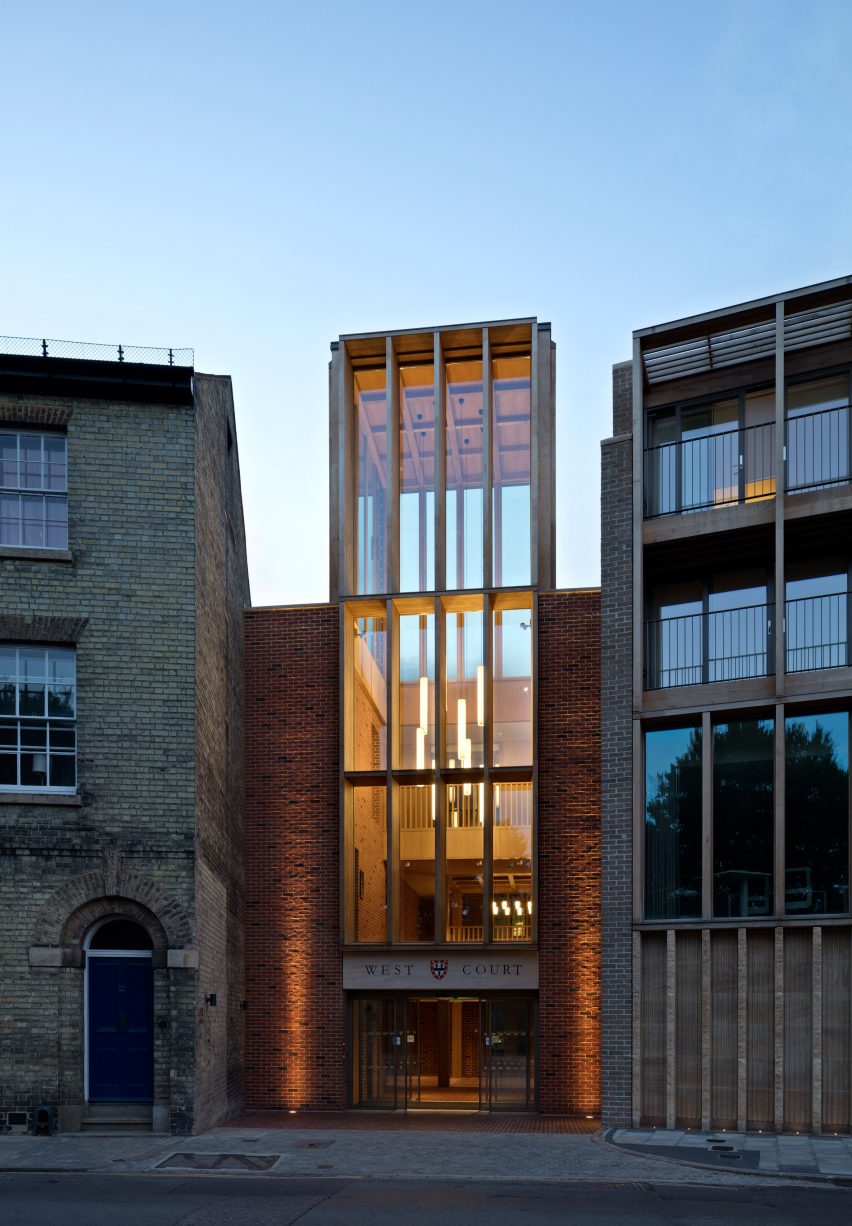
Niall McLaughlin Architects has previously refurbished a prayer room and priory in Dublin that features built-in wooden furniture, and designed a fishing hut in Hampshire with walls that fold open to provide views of a lake.